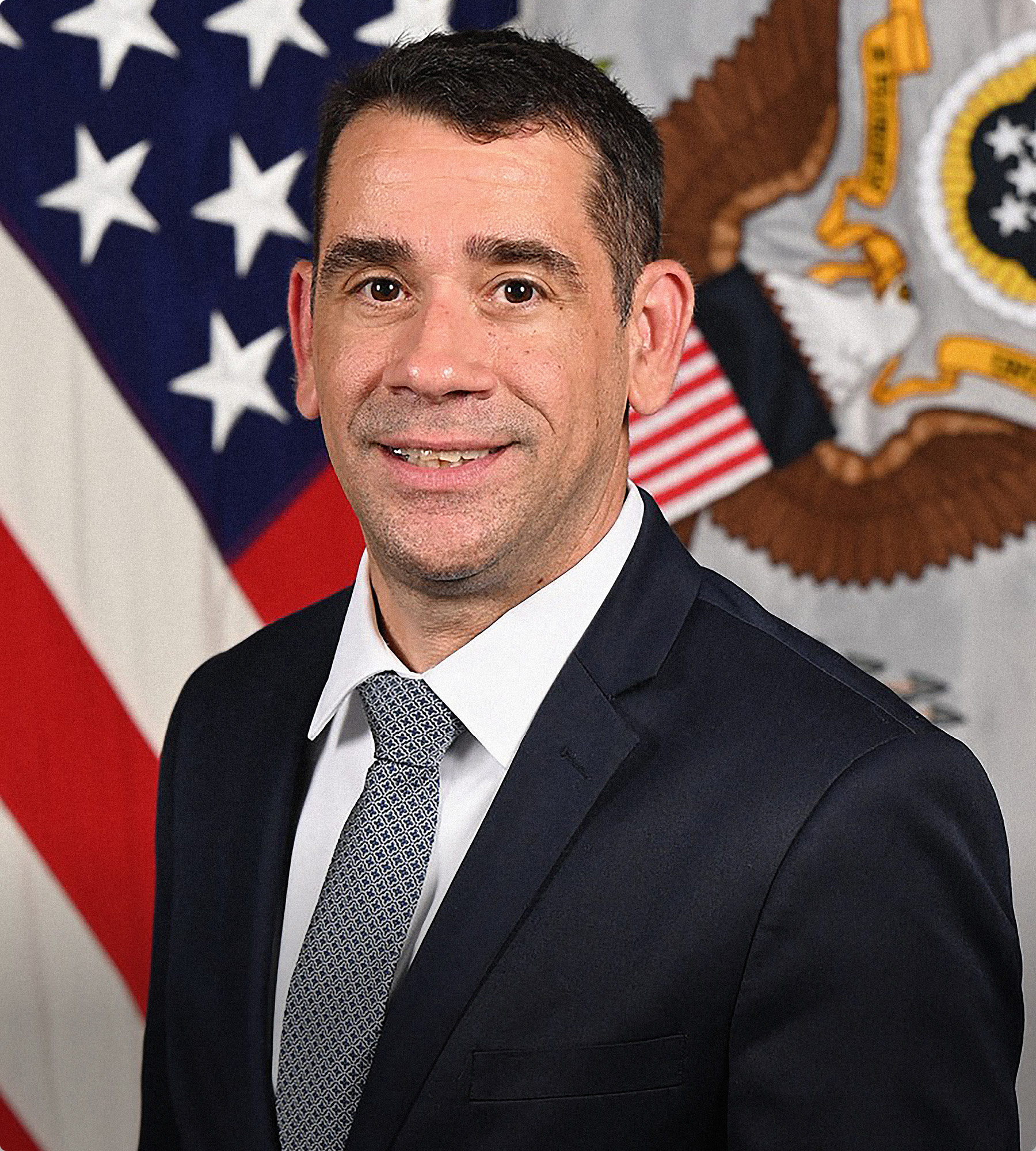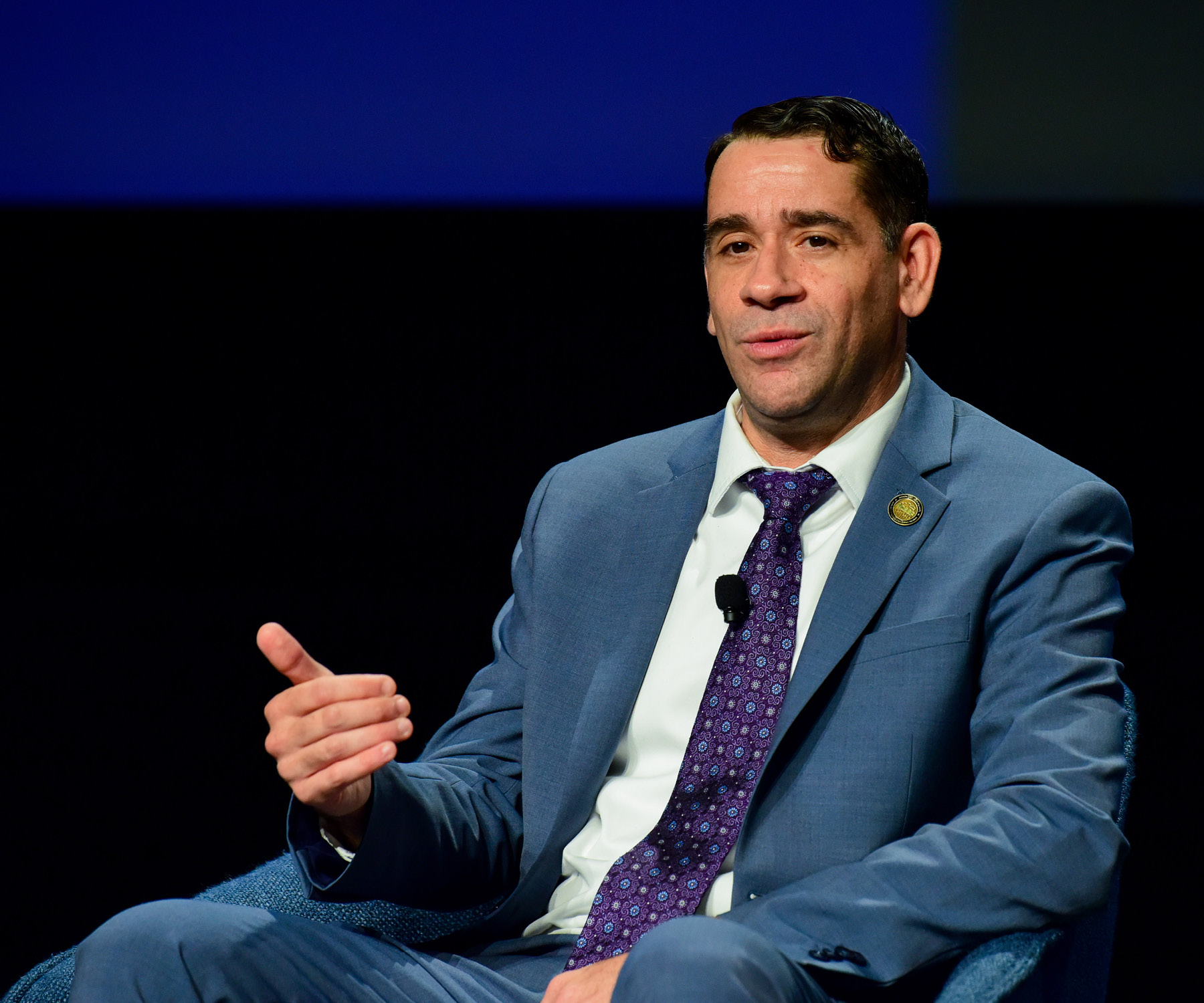Language
You can read the magazine in one of the following languages
Geolocation
You can read the global content or the content from your region

For most people, the idea of military technology likely conjures up mental images of high-powered lasers and autonomous drones. While potentially lethal technologies are clearly vital to armies of today, modern militaries equally require advanced technologies at all levels of the organization.
Leonel Garciga, Chief Information Officer (CIO) of the United States Army, knows first-hand how important getting the right technology policies and guidance is for any world-leading military in the 21st century.

“One of the things that as an army we were definitely lacking was IT and information management policy and guidance.”
“What we’re really trying to do is lay down that foundation to free up soldiers’ time to do missions and remove some of that cognitive burden that we’ve seen with so much data available at people’s fingertips kind of slowing us down,” he explains.
Working his way up from a mechanical engineer to an intelligence analyst to his current CIO position gives Garciga a unique perspective across the needs and challenges that US Army soldiers and workers face. But being the CIO wasn’t always on the cards for Garciga, who was getting ready to make the move to the private sector before he was tapped by the Secretary of the Army.
“Sometimes you’re the guy on the sidelines that says, ‘I wish the CIO would just do this’. And I said that a lot in my previous job. So when somebody said, ‘Hey, do you want to be the CIO?’ I said, ‘Well, I guess I better put my money where my mouth is and go do it,’” he reveals.
There’s no question the extremely complex geopolitical landscape of today adds to the already heavy workload for Army leaders. From an information technology perspective, Garciga sees the vastness and diversity of the technologies and tools available, including high-performance computers at the Army research lab all the way to point-of-sale systems at bases, to be the backbone of operational excellence.
On day one of his role as CIO, Garciga shared his observations from his years in the Army directly with his team.

“One of the things that as an army we were definitely lacking was IT and information management policy and guidance on a lot of the emerging technology that’s coming out,” he says.
Instead of jumping on the latest so-called innovation, Garciga set out to actually institutionalize policies that make a sustained impact. He found the best way to do this was through standing guidance and policy.
In practice, that means development, security and operations practices are being implemented to boost both software security and development speed, with new guidance being developed to streamline software acquisition and management.
Perhaps unsurprising considering the rise in state-sponsored cyber attacks in recent years, Garciga is also leading a drive to refocus the approach toward cyber threats on a risk basis, as opposed to compliance-based.
Both large corporations and federal agencies have historically viewed compliance in accordance with National Institute of Standards and Technology or Department of Defense guidance as the main goal.
But Garciga’s approach is focused on putting time and effort into where he sees the risks and where the highest probabilities are to make sure the most pressing threats are dealt with.
The practical benefits of this approach may be clear to see, yet it will require a substantial cultural and technological shift to be successful. “Moving a group of folks who’ve been focused on compliance to start focusing on risk-based defensive cyber operations has been a real big push,” he explains.

“How do we make sure that both from a technical organizational and policy perspective we have a solid foundation?”
Viewing this as a plan that will take place over the next 18 months is the most appropriate approach, according to Garciga, as this is far from an overnight process.
“It’s something we’re definitely laying the foundation for. Moving our approach to cybersecurity to be focused on risk and understanding what the threats are to our systems, whether they be a large-scale enterprise resource planning system or a weapon system on the battlefield, is important so we can make smart, informed cybersecurity decisions.”
With the Army CIO office itself just shy of four years old, the entire leadership team is working to make a genuine impact and build out a long-term program. Embarking on wide-ranging digital transformations has been popular in recent years but Garciga believes digital transformation starts with building a strong base.
“That’s really where we’re focused right now – how do we make sure that both from a technical organizational and policy perspective we have a solid foundation?” he says.
A central part of the transformation and modernization agenda pursued by Garciga and his team is backed by industry, academic and commercial partnerships. There’s no question that calling on talent from outside of the Army has unlocked access to cutting-edge technologies and expertise.
As a long-standing innovation partner to the Army, Agile Defense has provided digital transformation services that bring the best of commercial technology to the organization, where it is needed most.
Improving cross-sector collaboration isn’t a one-off initiative, with partnerships with institutions like Carnegie Mellon University and the University of North Carolina benefiting executives, as well as the wider civilian workforce.

The end goal for all these initiatives is to enhance soldier readiness and create a modern, data-centric army.
“We’ve had a lot of help from the War College and the Military Academy on beefing up and building some initial courses – think of it as data literacy 101 for our uniform folks – which has scaled out across the civilian workforce,” he adds.
The end goal for all these initiatives is to enhance soldier readiness and create a modern, data-centric army. The unique scope of his CIO role enables Garciga to drive forward data literacy and offer platforms to workers for data integration and analytics that ensure soldiers are equipped to excel both on and off the battlefield.
Garciga’s experience rising in rank in the Army perfectly illustrates the ability to progress up the ladder of command, and he points out that not only does he see the US Army as a great place to work, but there are few other jobs that offer the opportunity to do missions across so many different areas.
“I always tell folks that working in the Army, and especially this job as CIO, is kind of like being the CIO of Walmart and Amazon as well as a research lab, as you are able to get your hands on a lot of new and emerging technologies.”